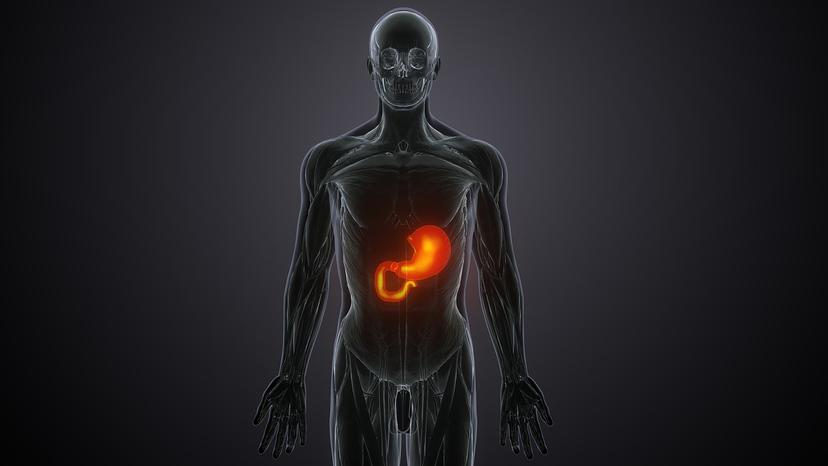
Breast Cancer Surgery Options in the UK for Patients in Russia
26 Jul, 2024
 Healthtrip Team
Healthtrip TeamBreast cancer surgery is a crucial component of the treatment process, designed to remove cancerous tissues while aiming to preserve as much healthy tissue as possible. Patients in the UK have access to cutting-edge facilities and skilled surgeons specializing in breast cancer care. Here’s an overview of the key types of breast cancer surgery:
Most popular procedures in India
Breast cancer surgery aims to remove cancerous tissue while preserving as much healthy tissue as possible. The choice of surgery depends on various factors, including the stage of cancer, the type of tumor, the patient's overall health, and personal preferences. In the UK, several advanced surgical techniques are available, each with unique benefits and considerations.
Wellness Treatments
Give yourself the time to relax
Lowest Prices Guaranteed!

Lowest Prices Guaranteed!
1. Lumpectomy
is a procedure focused on removing the tumor and a small margin of surrounding healthy tissue, preserving as much of the breast as possible? This breast-conserving surgery is typically suitable for early-stage cancers and helps maintain the breast’s shape and appearance. Lumpectomy is preferred for its ability to retain the breast's form while treating cancer effectively, and it often results in a shorter recovery time compared to more extensive surgeries. However, additional treatments like radiation therapy may be necessary to ensure all cancer cells are eradicated, and it may not be appropriate for all types of breast cancer, particularly if the tumor is widespread.
2. Mastectomy
involves the removal of one or both breasts, depending on the extent and stage of the cancer. There are several types of mastectomy: total mastectomy removes the entire breast, including the nipple and areola, while partial mastectomy removes only a part of the breast tissue. Mastectomy is typically recommended for patients with larger tumors, multiple tumors, or cancer that has spread throughout the breast. Although it significantly reduces the risk of cancer recurrence, it results in the permanent loss of breast tissue, which may impact body image. Many patients opt for reconstructive surgery to restore the breast’s appearance after a mastectomy.
3. Sentinel Node Biopsy
is a less invasive procedure that removes only the first few lymph nodes, known as sentinel nodes, to check for cancer spread. This technique helps determine whether cancer has spread beyond the breast with minimal surgical intervention. Sentinel node biopsy is particularly useful for early-stage breast cancer patients and typically involves fewer complications compared to more extensive lymph node removal. However, if cancer is detected in these nodes, further surgery may be required.
4. Axillary Lymph Node Dissection
involves removing several lymph nodes from the armpit (axilla) to assess whether cancer has spread to these nodes. This procedure is recommended when cancer is suspected to have spread beyond the sentinel nodes. While it provides a comprehensive evaluation of cancer spread, it is more invasive and carries a higher risk of complications such as lymphedema (swelling due to lymph fluid buildup) and reduced arm mobility. This procedure helps guide further treatment decisions and ensures thorough cancer management.
5. Reconstructive Surgery
is aimed at restoring the breast’s shape and appearance after a mastectomy. Options include implant-based reconstruction, which uses silicone or saline implants to recreate the breast, and autologous reconstruction, which uses tissue from other parts of the body, such as the abdomen or back. Reconstructive surgery can significantly enhance body image and self-esteem, offering various techniques to meet individual needs and preferences. Although it involves additional surgeries and a longer recovery period, it provides an opportunity to regain a natural breast appearance and improve overall quality of life.
Each type of breast cancer surgery offers distinct benefits and considerations, tailored to the patient’s specific needs and cancer stage. The UK provides advanced surgical options and expert care, ensuring that patients receive personalized and effective treatment for their breast cancer journey.
1. Lumpectomy (Breast-Conserving Surgery)
Lumpectomy, or breast-conserving surgery, is a procedure where the tumor and a small margin of surrounding tissue are removed while preserving the majority of the breast. This approach is often recommended for early-stage breast cancer and aims to maintain both the appearance and function of the breast.
- Lumpectomy is less invasive than mastectomy, leading to a quicker recovery and reduced physical impact. By preserving most of the breast tissue, it helps maintain the breast's natural shape and appearance, which can be important for the patient's body image and self-esteem.
- Although lumpectomy is effective for treating early-stage breast cancer, it usually requires follow-up radiation therapy to target any remaining cancer cells and minimize the risk of recurrence. Patients should be prepared for additional treatments and potential monitoring to ensure comprehensive cancer management.
2. Mastectomy
Mastectomy is a surgical procedure that involves the removal of one or both breasts, depending on the extent and stage of the cancer. The procedure can be classified into two main types: total mastectomy (removal of the entire breast) and partial mastectomy (removal of part of the breast).
- Mastectomy significantly reduces the risk of cancer recurrence, especially in cases where the cancer is more advanced or has spread beyond the initial tumor site. By removing the affected breast tissue, the procedure aims to eliminate cancerous cells and improve long-term outcomes.
- Mastectomy typically involves a more extended recovery period compared to less invasive procedures. Patients may need to undergo reconstructive surgery to rebuild the breast's appearance and address physical changes. Additionally, the emotional and psychological impact of losing one or both breasts should be considered, and support may be needed to navigate these changes.
3. Sentinel Node Biopsy
Sentinel node biopsy is a surgical procedure used to identify and examine the first few lymph nodes (sentinel nodes) that drain lymphatic fluid from the tumor site in the breast. This procedure helps determine whether cancer has spread beyond the breast and aids in staging the disease.
- This method is less invasive than a full lymph node dissection, leading to a shorter recovery time and reduced risk of complications such as lymphedema (swelling caused by lymph fluid buildup). Sentinel node biopsy provides crucial information about cancer staging, which is essential for planning further treatment.
- If cancer cells are detected in the sentinel nodes, additional procedures, such as a full axillary lymph node dissection, may be needed to assess the extent of the spread and guide further treatment. Patients should be aware that while sentinel node biopsy is less invasive, it still involves some surgical risks and requires careful follow-up.
4. Axillary Lymph Node Dissection
Axillary lymph node dissection is a surgical procedure used to determine if breast cancer has spread to the lymph nodes under the arm (axilla). This method involves removing multiple lymph nodes from the axillary region and examining them for cancer cells. The primary benefit of an axillary lymph node dissection is that it helps in staging the cancer by providing crucial information on the extent of its spread. This procedure can be vital for planning further treatment, such as chemotherapy or radiation. It also helps in managing the cancer more effectively by removing potentially cancerous nodes.
Considerations:
- Surgical Risks: As with any surgery, there are risks involved, including infection, bleeding, and adverse reactions to anesthesia.
- Lymphedema: A common side effect is lymphedema, which is swelling in the arm due to the disruption of lymphatic drainage. This condition can cause discomfort and require ongoing management.
- Recovery Time: The procedure may involve a longer recovery time compared to less invasive options, and patients may need physical therapy to regain full function and mobility of the arm.
Overall, axillary lymph node dissection provides essential information for comprehensive cancer management but requires careful consideration of its risks and benefits.
5. Reconstructive Surgery
Reconstructive surgery aims to restore the breast's appearance following mastectomy or significant tissue removal. There are two primary methods: implant-based reconstruction and autologous tissue reconstruction.
A. Implant-based reconstruction involves using silicone or saline implants to recreate the breast shape. This method is less invasive, generally has a quicker recovery time, and can often be performed simultaneously with mastectomy. However, it may require additional surgeries in the future and carries risks such as implant rupture or leakage.
B. Autologous tissue reconstruction uses tissue from another part of the patient's body, such as the abdomen or back, to rebuild the breast. This approach offers a more natural look and feel and can provide long-lasting results. It is more complex, involves a longer recovery period, and results in additional scarring at the donor site.
Choosing the right reconstructive option depends on various factors, including the extent of the mastectomy, personal preferences, and overall health. A detailed consultation with a plastic surgeon is essential to determine the most suitable approach based on individual needs and goals.
Why Choose the UK for Breast Cancer Surgery?
1. Advanced Technology: The UK is home to some of the world’s most advanced medical technologies and innovative treatments, ensuring high-quality care.
2. Expert Surgeons: The UK boasts a network of highly skilled and experienced surgeons specializing in breast cancer surgery, providing expertise in both common and complex cases.
3. Comprehensive Care: UK hospitals offer a multidisciplinary approach to breast cancer care, integrating surgical, medical, and supportive services for holistic treatment.
4. Support for International Patients: Many UK hospitals provide specialized services for international patients, including assistance with travel arrangements, language support, and personalized care plans.
Breast cancer surgery in the UK offers Russian patients access to world-class medical expertise and advanced treatment options. From lumpectomy and mastectomy to reconstructive surgery, the UK provides a range of approaches tailored to individual needs. By choosing a leading hospital and preparing thoroughly, patients can access top-quality care and support throughout their treatment journey.
For more information or to schedule a consultation, consider reaching out to the top hospitals mentioned in this blog. Early intervention and access to advanced care can make a significant difference in your breast cancer journey.
Related Blogs

Breast Cancer Treatment Options
Explore the various treatment options for breast cancer

Stomach Cancer Treatment Options: Surgery, Chemotherapy, and More
Explore the treatment options for stomach cancer with Healthtrip

Esophageal Cancer Treatment in the UK: What Russian Patients Can Expect
Esophageal cancer presents significant treatment challenges due to its complexity

Stomach Cancer Treatment in the UK: Comprehensive Options for Patients from Russia
Stomach cancer, or gastric cancer, presents significant challenges and requires

Pancreatic Cancer Treatment Options in the UK: A Guide for Patients from Russia
Facing a diagnosis of pancreatic cancer can be overwhelming, especially

Advanced Lung Cancer Treatments in the UK: A Guide for Patients from Russia
Facing a diagnosis of advanced lung cancer can be daunting,










